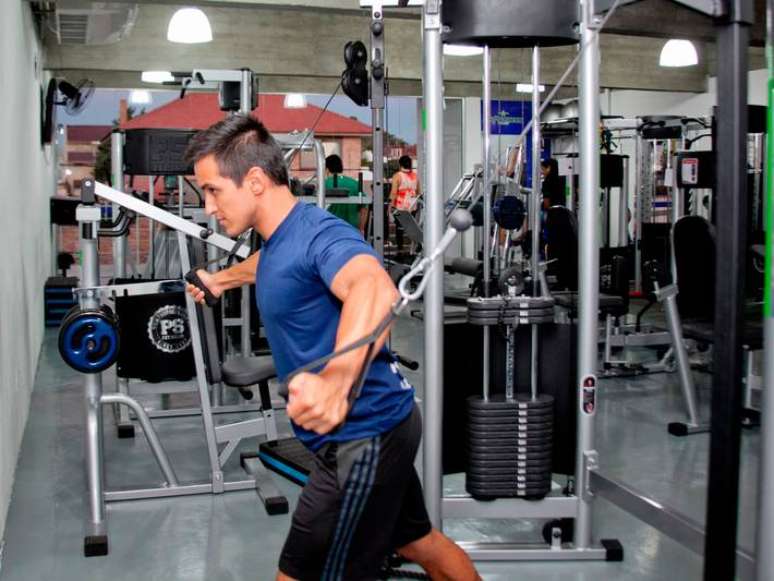Studies indicate that the benefits are large for sedentary people or athletes who maintain physical activity as a routine
Your Body fat are you fit? It could be if you start or continue to exercise, according to exciting new science showing that being physically active causes molecular changes in ways that improve fat health. With broad implications for the state of our metabolism, muscles, and even the way our bodies handle the holiday gluttony season.
Many people are unaware that body fat can be metabolically healthy — or vice versa — regardless of someone’s weight or shape. “Healthy fat isn’t about how much fat someone carries around,” said Jeffrey Horowitz, a professor at the University of Michigan who studies exercise and metabolism. He has to do with how well that fat works. “A person who has healthy fat is much better off than someone with the same percentage of body fat whose fat is unhealthy.”
What differentiates healthy fat from unhealthy fat is the size of fat cells. “The smaller the fat cells, the better,” says Horowitz. And you don’t have to lose weight or fat to make the body fat you already have more metabolically healthy. Big fat cells are already full of fat. They can’t store much more and tend to leak some of their contents into the bloodstream in the form of fatty acids. From there, the fatty acids spread and are deposited in other organs, such as the heart, muscles or liver. Fatty liver, muscle or heart are undesirable.
Small fat cells, on the other hand, can expand, essentially sucking the fat out of the bloodstream. It’s best if the fat stays inside the fat cells. Healthy fat cells also contain active mitochondria, the energy centers of every cell. Mitochondria convert oxygen and food into cellular energy. In general, the higher the number of mitochondria, the healthier and more resilient any cell will be, including fat cells.
Finally, healthy adipose tissue is packed with blood vessels to carry oxygen and nutrients to your fat cells, along with battalions of other cells, most of which are related to immunity, that help fight inflammation. Without sufficient blood supply and immune protection, fatty tissue often becomes inflamed and scarred and releases substances into the bloodstream that initiate similar, harmful inflammation elsewhere in the body, even in people who aren’t overweight.
Until recently scientists weren’t sure if or how much it could change our fat. That is, they knew that healthy fat tissue could deteriorate, becoming filled with large, leaky cells, dysfunctional mitochondria, and inflammation. But it’s unclear whether this process can be reversed or slowed down. Some recent rodent studies have been encouraging, suggesting that physically active animals harbored more metabolically healthy body fat than sedentary rodents, even though they were all overweight standard rodents.
But we’re not lab rats, and many questions about the malleability of our body fat remain unanswered. A study published in June brought glimmers of clarity. In the study, researchers at the University of Copenhagen in Denmark biopsied the abdominal fat of sedentary young men, sedentary older men, and physically active older men, most of whom were frequent and long-time cyclists.
Fat cells from older, sedentary men showed relatively poor mitochondrial health, with fewer mitochondria than fat from younger men. But the fat cells of physically active men contained many mitochondria, even more than in the fat tissue of young men, so their fat cells were generally better supplied with energy. Adipose tissue also showed fewer signs of incipient inflammation than fat from inactive men, regardless of age. “Exercise training meant more functioning mitochondria and, essentially, healthier fat,” noted Anders Gudiksen, a professor of cell biology at the University of Copenhagen who led the study.
html[data-range=”xlarge”] figure image img.img-7f7caaa2324f43372914aabcb609e92bxq02ey4g { width: 774px; height: 581px; }HTML[data-range=”large”] figure image img.img-7f7caaa2324f43372914aabcb609e92bxq02ey4g { width: 548px; height: 411px; }HTML[data-range=”small”] image figure img.img-7f7caaa2324f43372914aabcb609e92bxq02ey4g, html[data-range=”medium”] figure image img.img-7f7caaa2324f43372914aabcb609e92bxq02ey4g { width: 564px; height: 423px; }
It’s never too late to start
But for anyone who hasn’t had the idea of being a cyclist all their life, another new study offers hope that starting to exercise now, no matter how sedentary you may be, can rapidly improve your fat burning fitness. For the new study, published in the Journal of Physiology and overseen by Horowitz, researchers took a fat tissue biopsy from 36 sedentary men and women with obesity and then asked them to ride a stationary bicycle at a moderate pace for 45 minutes or more intensely for 20 minutes, four times a week, for 12 weeks.
The volunteers’ diets were carefully monitored so that they did not lose weight. Otherwise, Horowitz said, the changes could come from weight loss, not exercise. But even without losing weight, the volunteers who exercised still gained weight. And they ended up with substantially smaller fat cells, as well as more capillaries to nourish those cells. Their adipose tissue also contained fewer biochemical markers of inflammation and fewer symptoms of scarring around the fat cells.
These effects were seen whether the volunteers did moderate or vigorous exercise. In the short term, these changes should leave adipose tissue better able to absorb and store the extra calories someone eats in large holiday meals, Horowitz said, a scenario that doesn’t necessarily mean weight gain. This fat is usually stored temporarily and is soon converted into energy for other tissues, such as muscles. But in the meantime, this fat is best stored in fat cells, not the liver or arteries.
The long-term implications of exercise and being fat revolve around inflammation, Horowitz pointed out, and whether and how metabolically healthy fat contributes to a metabolically healthy body, even if people are obese. We need more research to fully understand what constitutes healthy fat, he added, and the types and amounts of exercise that best generate or maintain it. But it already seems clear to him that movement benefits fat as well as the rest of your body, giving you one more reason to cycle, walk, run, swim or do any other physical exercise today. /TRANSLATION BY RENATO PRELORENTZOU
Source: Terra
Ben Stock is a lifestyle journalist and author at Gossipify. He writes about topics such as health, wellness, travel, food and home decor. He provides practical advice and inspiration to improve well-being, keeps readers up to date with latest lifestyle news and trends, known for his engaging writing style, in-depth analysis and unique perspectives.









